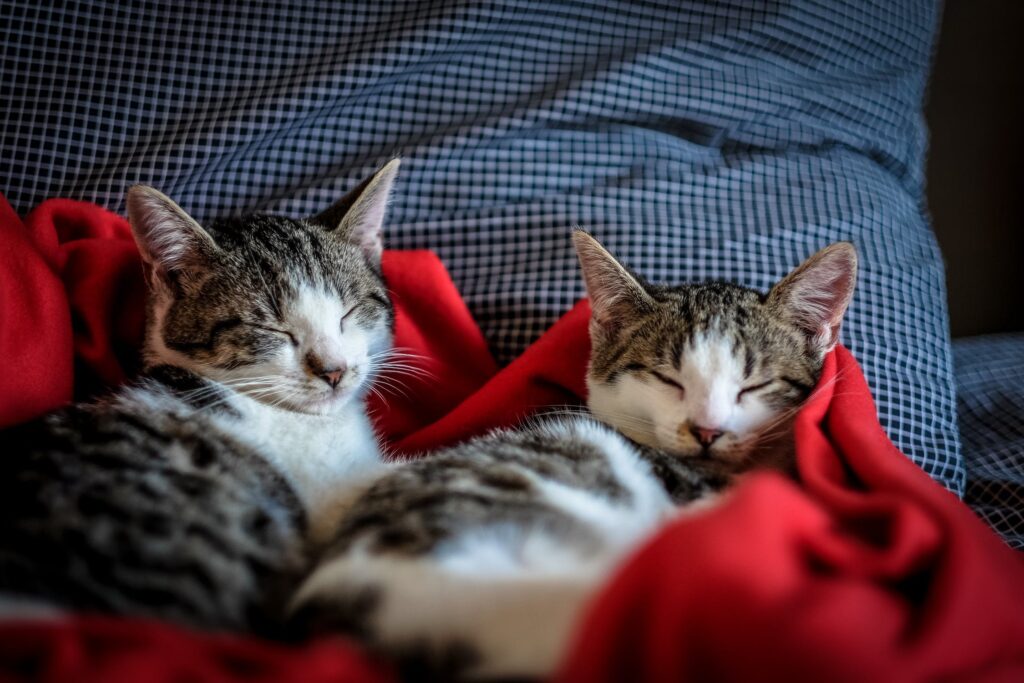Guide to place your cat’s things at home

Finding the right layout for your cat’s scratching post or feeder, as well as for your other items, is very important for your cat to feel comfortable and at home. If you don’t know where to start, this guide will help you place your cat’s things in a way that respects their preferences and needs.
Tray – Away from drinkers and feeders.
In a quiet and ventilated place.
In an easily accessible place. Depending on the characteristics of the cat and the space in the house, it is better, for example, to avoid places far away from where the cat spends most of its time. In houses with several floors, it is advisable to place a tray per floor.
It must be accessible 24 hours a day.
If there is more than one cat, the trays should be placed in different places to avoid competition issues when using them.
Scraper
Close to where the “cat sleeps”.
Near the places of entry and exit of the house.
At strategic points in the house close to prominent surfaces.
Near where the cat usually sharpens its nails.
Rest areas
In high places.
In the quietest and most sheltered parts of the house.
Some beds can be located in warm and sunny places.
Areas to shelter
In high or hidden places.
In the quietest and most sheltered parts of the house.
Game Zone
Away from the entry and exit points of the house.
The scraper should not be visible.
Drinker
In quiet places and possibly avoiding corners.
Away from the litter box.
away from the feeder.
Away from the entry and exit points of the house.
If there is more than one cat, the waterers should be placed in different places to avoid competition problems when using them.
Feeder
In quiet places.
Away from the litter box.
Away from the drinker.
Away from the entry and exit points of the house.
If there is more than one cat, the feeders should be placed in different places to avoid competition problems when using them.
We give you some tips to prepare your house for when your new kitten comes home. Bringing a new cat home is an exciting experience.
TIPS FOR CAT SAFETY INSIDE THE HOME
Cats, and especially kittens, are naturally curious and investigate objects by touching, smelling and tasting them. When bringing a new cat into your home, they will be curious about everything and, unlike us, they will not be able to differentiate between what is dangerous and what is not. If you’re not sure how to cat-proof your home, use our list of tips to keep your pet out of harm’s way!
KITTENS: CAT PROOFING YOUR HOUSE
When you first bring your new Cat Facts or kitten home, keep all windows and doors closed until he’s fully adjusted, check that he’s up to date on all his shots, and that he’s sterilized. Make sure all kitchen and bathroom bins have claw-proof lids, and never leave garbage bags where they can be attacked! Save any breakable ornaments, as they won’t last long with a curious kitty on the scene.
Always remember to close the doors of the oven, refrigerator, microwave, dishwasher, dryer and washing machine. Put notes on the doors of these devices to remind people to check the interior for scouting cats before using them. Little kitties find a hot dryer or bright washing machine irresistible!
Keep toilet lids down to prevent your kitty from falling into or drinking from them (or even trying to use it for himself!). You may need to leave a note to remind forgetful visitors or roommates.
Hide all hanging electrical cords behind furniture. You can buy thick cable protectors at most hardware stores – they go around your cables and protect them from being bitten.
Keep your plastic bags in a safe place, as they can be a real danger if chewed, swallowed or hidden inside them. Burning candles, burning incense, or oil burners only spell trouble and furry cats don’t get along very well. If you make a fire, make sure you have someone watching it.
Shorten the cords of blinds and curtains, and keep them out of reach of their paws.
Keep your kitchen countertop clean and remove food debris quickly. Chicken bones are often tempting to cats, but they can be very dangerous, as they can splinter while chewing. The strings used for meat are also irresistible as a snack or toy, but they can cause serious health problems if swallowed.
Cats love to climb, so if you want to protect your furniture, scratching posts will come in handy, especially those with a raised platform where they can sleep or hide without being disturbed.
Check the following list of dangerous substances and make sure you store them safely so they can’t do any harm. Install floor-level child locks on kitchen cabinets, as curious kitties have a knack for opening doors.
HAZARDOUS SUBSTANCES TO AVOID
Unfortunately, a lot of common household items are highly toxic to cats, even in small amounts. To keep your cat safe, avoid using the following:
Cleaning and hygiene products, such as chlorine or products containing phenols (such as disinfectants that cloud the water). Human medicines (such as aspirin, paracetamol, or ibuprofen).
Antifreeze and other automotive products.
Beauty or decorative products such as hair dye, turpentine and nail polish remover.
Rat Poison: These products, in particular, should not be used at all, as your cat can get very sick if they eat poisonous prey. If you must use them, keep them out of the cat’s reach.
- Anti-slugs (there are versions compatible with pets).
- Camphor balls (naphthalene or paradichlorobenzene).
- Flower essences, fabric softeners, dishwasher detergents (all contain cationic detergents that cause corrosive injury)
- Batteries (contain acids or alkalis that cause corrosive injury).
- Homemade plasticine (due to high levels of salt).

